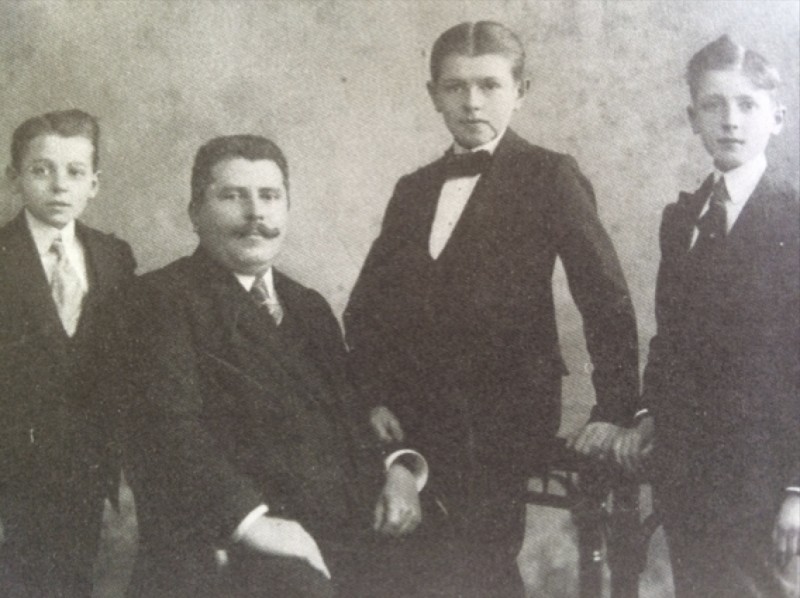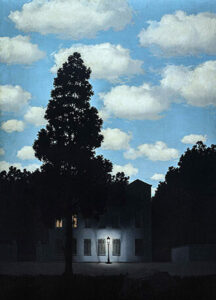René Magritte
The story




All four held by those around them responsible for this tragedy because of their escapades, Magritte and his two brothers left with their father Châtelet to settle in Charleroi in March 1913. The education of the children was then entrusted to a governess, Jeanne Verdeyen, whom Léopold Magritte would marry in 1928. René Magritte poorly continued his studies at the city’s athenaeum and read Stevenson, Edgar Allan Poe, Maurice Leblanc and Gaston Leroux. His father having given him a Pathé camera, he creates small drawn films. During his holidays with his father’s family who run a shoe shop in Soignies, he likes to play with a little girl in a disused cemetery whose underground vaults they visit. At the Charleroi fair, in August 1913 he met a twelve-year-old girl, Georgette Berger, whose father was a butcher in Marcinelle. They met regularly on the way to school but lost sight of each other at the start of the 1914-1918 War.
Charleroi being occupied by the German army, the family returns to Châtelet where the father of Magritte pursues activities of representative for the Kub broth of Maggi. It was at the end of 1914 or at the beginning of 1915 that Magritte produced a first painting of more than one meter fifty by nearly two meters from a chromo representing horses fleeing a burning stable, offering his later paintings to his friends. In October 1915 he gave up his studies and moved to Brussels, rue du Midi, not far from the Academy of Fine Arts, where he planned to attend classes as a free auditor. Before entering he then painted paintings in the Impressionist style.

The work
“A crate near his cradle, the recovery of a navigation balloon washed up on the roof of the family house, the vision of a painter painting in the cemetery where he was playing with a little girl… three childhood memories that the artist will keep his whole life ”, summarizes a biography of Magritte.

Magritte’s painting questions its own nature, and the painter’s action on the image. Painting is never a representation of a real object, but the action of the painter’s thought on this object. Magritte reduced reality to an abstract thought expressed in formulas dictated by his penchant for mystery: “I take care, as far as possible, to only paint paintings which arouse the mystery with the precision and the enchantment necessary to the life of ideas, ”he declared. Its mode of representation, which appears deliberately neutral, academic, even scholarly, highlights a powerful work of deconstructing the relationships that things maintain in reality.
Among the objects that contribute to his paintings of impenetrable enigmas, one object appears particularly recurrently: a black sphere, glossy, slit in the middle, which appears in many works, in extremely different layouts and sizes. Often referred to as a “bell”, although it does not have the shape, it has been successively interpreted as a black eye, the representation of a female sex, or a simple geometric shape. The artist, with a humor that his paintings often bear traces of, leaves the mystery intact about an object that focuses attention while resisting interpretation.


Another painting, La Reproduction interdite (1937), shows a man from behind looking at a mirror, which does not reflect the man’s face but his back. Likewise, painting is not a mirror of reality.
A painter of metaphysics and the surreal, Magritte treated the obvious with corrosive humor, a way of undermining the foundation of things and the spirit of seriousness. He slipped between things and their representation, images and words. Instead of inventing techniques, he preferred to get to the bottom of things, to use painting which becomes the instrument of an inseparable knowledge of the mystery. “Magritte is a great painter, Magritte is not a painter”, wrote Scutenaire in 1947.


